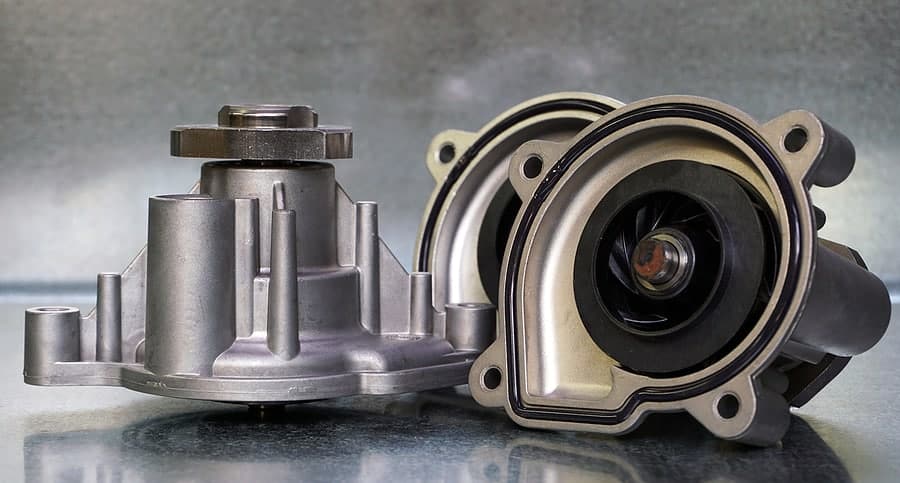
Combustion and friction generate a tremendous amount of heat in your car’s engine. To help all that thermal energy dissipate, you need to have a continuous flow of coolant, which is powered by the water pump. When the pump suffers from a fault or failure, this can lead to overheating, poor running of the vehicle, and even put a stop to your travels on the road. And because keeping the engine cool is so important – any issues that are left unchecked can lead to total engine failure.
Tables of contents:
- What does the Water Pump Do?
- What are the Consequences of a Failed Water Pump?
- How to tell there are Problems with Your Pump…
- Prolonging the Lifespan of your Pump
- Replacing a Water Pump
What does the Water Pump Do?
Originally, cars were cooled down with air running through the engine, to help conduct away the heat. As engine performance increased, this was no longer effective, leading engineers to construct the water cooling tech nearly all cars use today. It is equally as important as the oil lubrication system when it comes to protecting your engine, and uses energy from the drive belt to power the pump.
What are the Consequences of a Failed Water Pump?
If the pump fails, then this can lead to issues with the engine overheating, including damage to the central workings of the engine. You could be looking at some real problems, such as cracked cylinder heads, pushed head gaskets or even burnt pistons, as the temperature quickly skyrockets in the engine. Worst situation? Your engine could actually catch fire on the road, putting your life, and the lives of other road users in real danger.
How to tell there are Problems with Your Pump…
These following symptoms will give you an idea of the health of your pump. For the best results, act quickly on any problems as we’ve mentioned – the structural integrity and lifespan of your engine is dependent on it.
Coolant Leaks and Puddles Coming from the Front of the Car
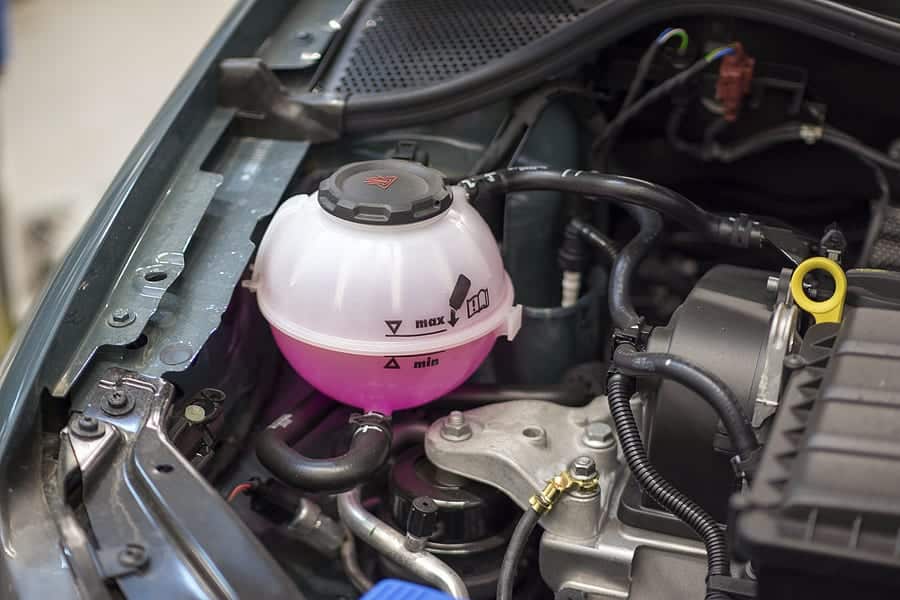
Have you noticed coolant leaking from the water pump around the front of the car?
Cause: several rubber gaskets are used in the construction of your pump to ensure that there is a tight seal between the different components. Over time, these rubber seals can dry out, crack and deteriorate, leading to drips and leaks.
Solution: keep one eye out for tell-tale red (or brightly coloured) coolant drips and puddles at the front of the car. If you act quickly, then the leak can be repaired, and the pump unit can be saved.
Corrosion to the Pump from Rust, Debris and Air Pockets
Small leaks over time can cause deposits such as calcium in the water to build up around the pump.
Cause: contaminated coolant mixtures or even the wrong coolant can cause particle build ups or a defective pressure cap can let in excess air.
Solution: check for signs of wear on the pump, and inspect the part for small holes in the metal or cavities in the mounting surface that have resulted from the impact of air bubbles in the coolant mixture. If you discover any of these signs, then it’s time to get the part checked out by a professional.
Overheating Engine and Warped Components
Too much heat in the engine can cause problems with the coolant system.
Cause: if the pump isn’t functioning correctly, then it will fail to effectively dissipate the heat that’s coming from the engine moving and the combustion process. You will also notice irregular rising engine temperatures through your dashboard gauge.
Solution: warped, melted, fused or just plain broken parts in the engine that are suffering from damage before the normal service intervals is a good giveaway. Normally you’re looking at problems with the internal impeller, requiring you to replace the water pump.
High Pitched, Harmonic Whining Noises
Issues with the pulley placement often manifest as a high pitched sound coming from the front of the car.
Cause: a loose pulley can create a buzzing or whining sound that’s quite high pitched as it’s pulled around by the pump. It’s usually caused by incorrect placement of the pulley, or problems with the bearings inside the pump.
Solution: unfortunately, once the bearings in the pump are worn out, this is the end of the road for the part, and you’ll need to shop around for a new or used replacement water pump.
Steam Escaping from the Car’s Radiator
Steam is a sure sign that the coolant system is not effectively channelling the heat out of the engine.
Cause: as we mentioned, coolant is essential to stop the engine overheating, circulating water to the radiator, which finally loses the heat to the ambient environment. Steam coming from the engine, whilst you’re out on the open road or coming to a stop, means that the coolant is overheating to the point it is evaporating.
Solution: bring your car to a halt immediately the moment you see steam. It will help preserve the engine and prevent problems. Get on the phone to the nearest emergency mechanic, and explain all the symptoms. Because of the potential damage that overheating can cause to the engine – due to the failed pump – you’ll probably be looking at a tow to the nearest service centre.
Prolonging the Lifespan of your Pump
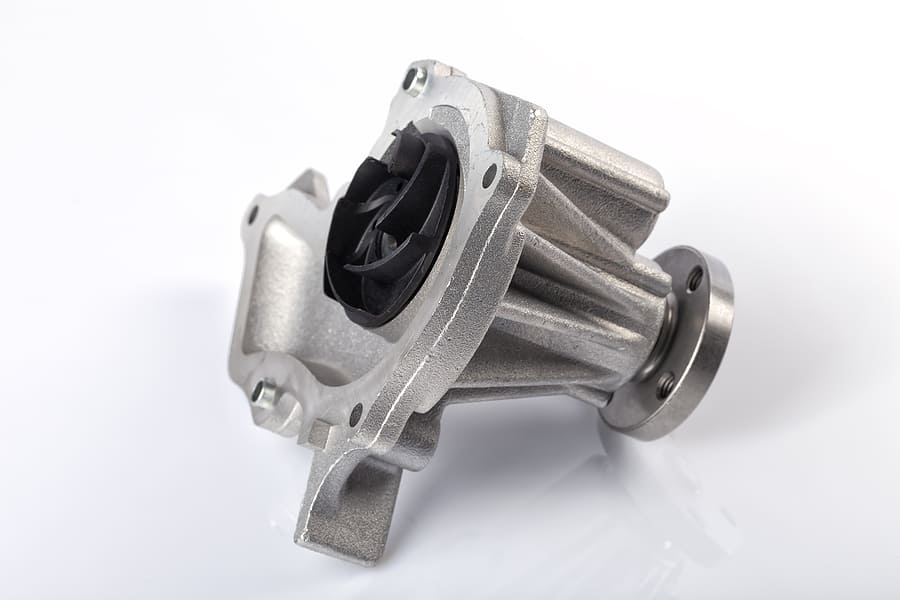
Of course, if you don’t want to have to deal with failure and replacement – then taking better care of your pump is a good place to start. The following tips can help extend the part’s lifespan:
- Coolant – always replace the coolant at the required service intervals, as dirt and debris can build up in the fluid, eventually damaging your pump and other parts.
- Correct tension – on the belt that connects the pump to the drive system is essential. Ensure you have the recommended tension, and the belt aligns with all the connected pulleys. Any problems with tension can lead to the pump shaft, bearing and seal becoming damaged.
- Overheating – get any excessive temperature problems resolved immediately. Failure to do so could result in damage to the pump’s internal workings and seals.
- Buy high quality – a good pump will keep your system working for longer. Cheaper pumps may present immediate savings, but are much more likely to require earlier attention.
- Replace the timing belt – at the same time you replace the pump. Problems with the old pump could have led to coolant coming into contact with the timing belt, and damaging the integrity of the rubber.
Replacing a Water Pump
Want to replace your own water pump? Be prepared for a tough job that’s ultimately best left to the mechanic due to the position of the part. Ideally, you’re looking at getting the pump replaced every 60K to 90K miles, and it can often be changed out at the same time as the timing belt, as accessing both parts requires the removal of the timing cover.

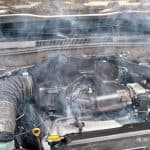
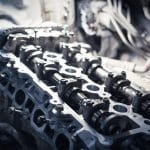
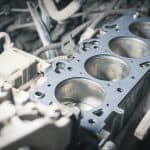
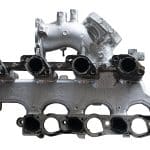
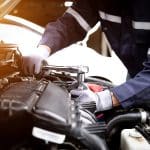
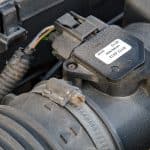
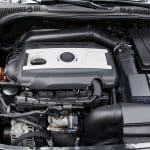
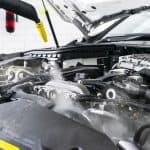

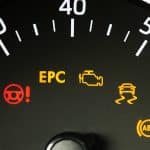
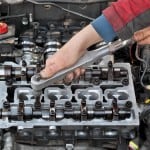
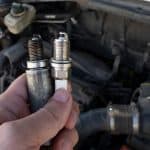
.png)